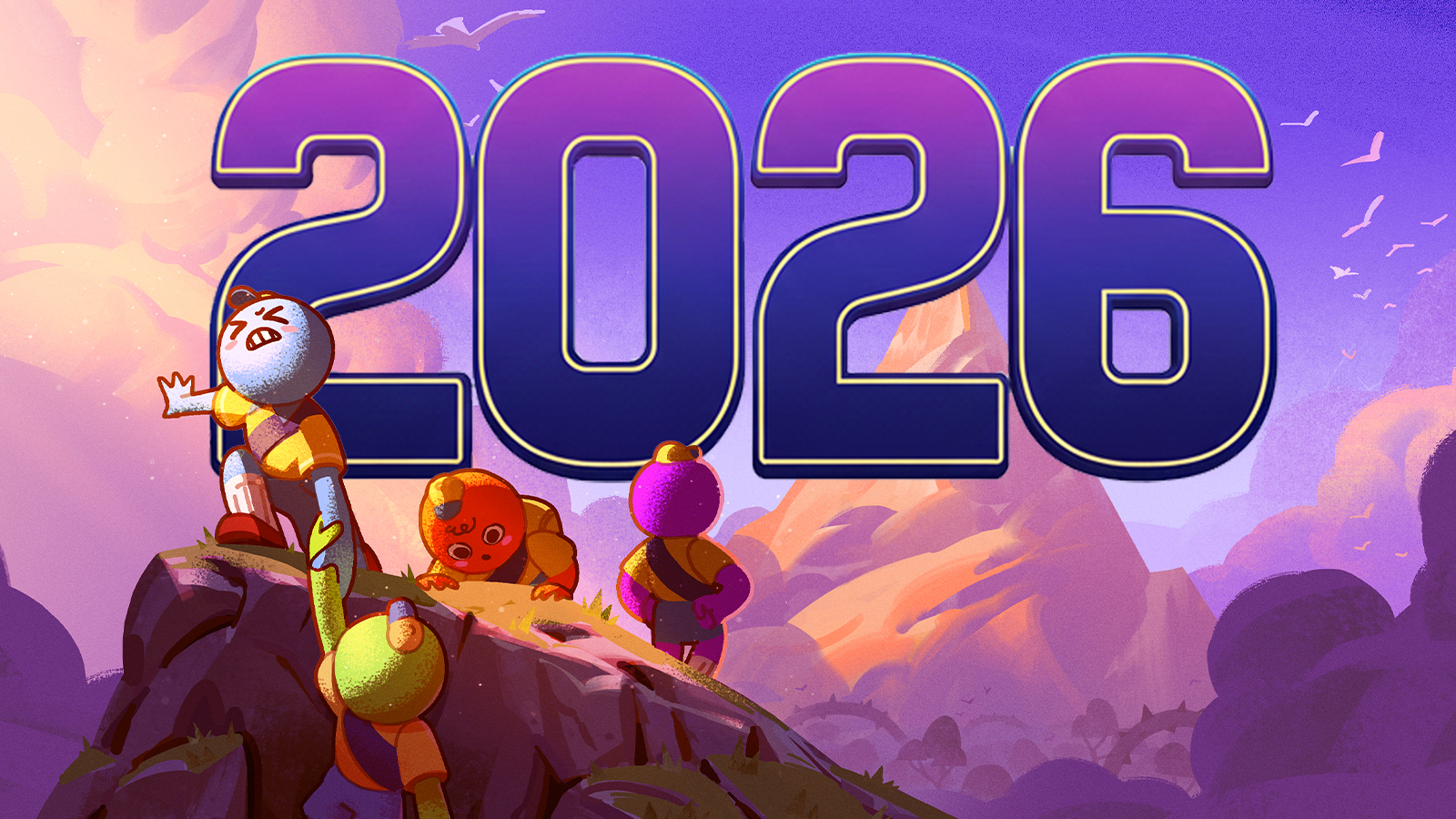Our Verdict
The Global Performance Cache is amazing, as it basically means that you have much more power to experiment with effects without waiting around for the rendering of your PC to catch up. As such it's worth, to a deadline-conscious compositor at least, the cost of an upgrade - or Creative Cloud subscription- in itself. The 3D camera tracker and ray tracer renderer are also very welcome additions, probably the Wow features in this release, though it has to be said we have a soft spot for the Illustrator integration too. Variable mask feathering has been long requested by the AE faithful, so that patience has been finally rewarded. Having sung the praises of After Effects CS6, there were things we weren't so keen on. We don't like the fact that Photoshop Video Layers and Pixel Bender are not presently supported. And we'll probably have to invest in an NVIDIA Quadra card or similar after being tempted by the thought of GPU-accelerated ray-traced 3D rendering. This may be problematic for those on a MacBook Pro or Windows laptop. It's also worth noting that the ray tracer does not support layer styles and certain masks and effects, nor is underlying transparency preserved, or tasks like lighting blending modes and track mattes supported. However the ray tracer renderer will deliver a very decent level of photorealistic quality using only the power of the CPU, so don't let this put you off upgrading.
For
- You no longer need to re-render cached items
- Cache Work Area In Background
- 3D photorealistic Ray Tracing renderer
- Masks can now have variable feathering
- Illustrator and Avid/Apple editing integration
Against
- Photoshop Video Layers not supported
- Pixel Bender Effects not supported
- Rolling Shutter Repair could be improved
- Limited range of supported cards for GPU acceleration
Why you can trust Creative Bloq
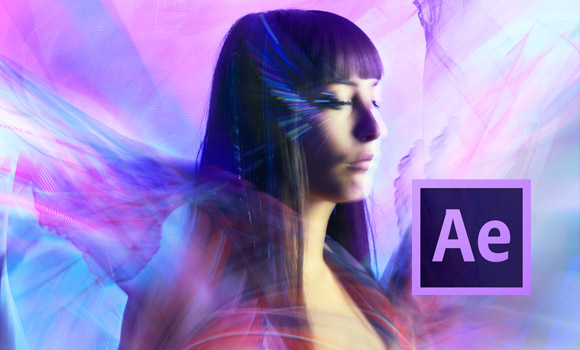
Adobe After Effects has a huge user base in the motion graphics and animation sectors, so any update to the power of this venerable compositing workhorse will be eagerly scrutinised by those working in broadcast and cross-media applications. Luckily for those artists (and Adobe), After Effects CS6 will do nothing to tarnish its status and appeal.
Global Performance boost in After Effects
Adobe After Effects CS6 users demand a lot from the application in terms of performance and file handling. As some compositions have hundreds of individual layers for example, each which can be nested within others, testing, especially on lower-specified computers, can cause performance bottlenecks and even application crashes. Enter the grandly titled 'Global Performance Cache' in AE CS6 - a combination of a global RAM cache, a persistent disk cache, and a new graphics pipeline.

Chug no more
Working with animation and effects has traditionally meant loading a project, then waiting as it chugs through rendering frames into a cache during its first run through, before allowing you to preview the composition or a selected work-area of the project. Now however you are able to open and cache one project while you work on another composition entirely via a new command in the Composition menu, called unsurprisingly enough, Cache Work Area in Background. Joking aside it's a joy to behold, or not as the case may be, as you can just fire up the command and get to work elsewhere, then switch back to start work on the original when required.
If you want a project to run in real-time (or as it will be output) After Effects has always required you to load it into RAM using the RAM Preview facility. The first time this is run, it displays a green line running as normal along the top of the Timeline panel in the lower portion of the application window, indicating which frames have been cached into RAM. However where things get interesting in CS6 is when you make changes.

Hands on with Adobe After Effects CS6
We decided to add an effect to our comp, CC Mr Smoothie from the Stylize menu, and as is normal, the green line disappears as the cached composition has now been changed. However the next RAM Preview that's run is considerably faster than the previous preview, despite the change. If we then delete the effect, the green line reappears and again the preview runs in real-time, without reloading the RAM Preview. The same thing happens if you toggle layer visibility as well as after an undo or redo command. Adobe has re-engineered the system to recognise any frame of a composition or layer inside a project that is the same as a previously rendered and cached frame, so that it does not need to be re-rendered. Reusable frames are recognised anywhere on the timeline, and this includes when they're in duplicated layers, or duplicated compositions or not on adjacent frames - which includes using loop expressions, time remapping and copying then pasting keyframes.
Persistence of Caching
Another great enhancement in After Effects CS6 is when you close the project or exit the app. On reopening a previously cached project we found blue lines above the comp layers, indicating that the application has located all the previously cached frames on the disk, without the need to re-render them. This persistent disk cache function can thus save a lot of time, and becomes even more valuable when the power goes down or your system crashes. The disk cache can be defined in Preferences> Media & Disk Cache, so you can specify a fast, connected drive, one separate from your footage. As an added bonus, the cache contains frames from all projects you have opened in the same or earlier sessions; so disk-cached frames from one project can be retrieved again for other projects that require those same frames.
Open GL now takes more control of many of the drawing features in After Effects CS6, including user interface elements, such as masks, motion paths and layer bounding box handles as well as Action and Title Safe grid overlays.
Daily design news, reviews, how-tos and more, as picked by the editors.

Throwing shapes in After Effects CS6
There's closer integration with Illustrator- allowing you to create Shapes from vector layers with a dedicated command. Once in this form it's simple to adjust attributes such as stroke widths and colours and fills, editing the colour directly within After Effects rather than returning to Illustrator. You can transform the scale, position, and rotation of the layer and edit the shape using Bezier handles. Other vector shapes can be added and blended with the original. Then, because this is After Effects, operators can be added to apply transformational animation to the stroke lines. We applied a number of animating paths to a number of imported stars simply by clicking on the outline of each star, adjusting the stroke width and clicking on the Add arrow alongside the Fill and Stroke controls, then choosing the Wiggle Paths operator.
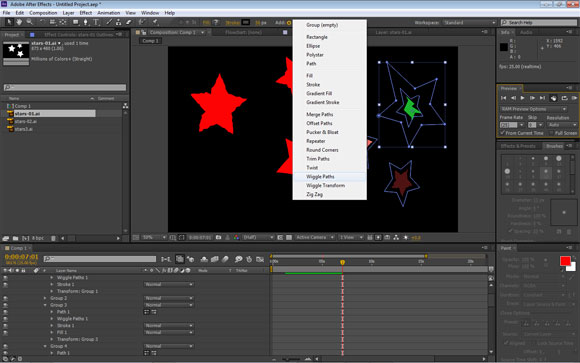
Massive 3D improvements in Adobe After Effects CS6
Perhaps the most exciting feature of the new release is the new Ray-traced 3D rendering engine, allowing you to simply and quickly design fully ray-traced, geometric text and shape layers in 3D space. After Effects had access to 3D before this release, but the new ray-traced renderer is offered as a new more physically accurate and powerful alternative to the existing scanline-based composition renderer, now known as the Classic Renderer. Once selected in the Composition Settings dialog, the Ray-traced 3D renderer allows for some enhanced 3D capabilities. These include bevelled and extruded text and shape layers for adding depth to those graphics you just brought in from Illustrator for example. It can also allow bending of footage and composition layers in order to add dimension and more advanced lighting effects. There's support for environment maps, allowing you to use a photo (HDR or otherwise) as a layer to enable the scene to have photorealistic reflections of the virtual imagery. There are also new material options like reflection, transparency - and index of refraction, which simulates light travelling through glass and other translucent materials.
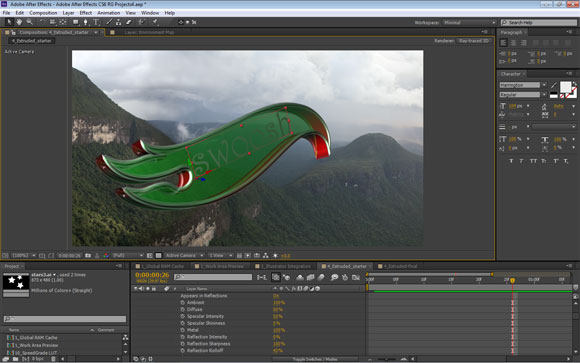
Ray tracing
Using a ray tracer to render the scene results in improved soft shadows and depth-of-field blur, plus sharper light transmission for video projection and realistic effects such as light streaming through a stained glass window. The quality of the render can also be adjusted - but this has a knock on effect on render times. The ray tracer uses the CPU of the computer for its calculations, but if you have a qualified graphics card that supports NVIDIA OptiX, you can take advantage of accelerated rendering- one of the Quadro line is recommended. However the Classic Renderer is still adequate for applying many lighting styles and material options.
Accurate Tracking in After Effects CS6
Another highly useful tool is the new 3D camera tracker. As the name suggests, this builds a virtual 3D camera within a piece of imported footage, automatically determining the movements of the camera in the original footage and its relationship to the planes in the scene. It's thus much quicker than previous versions to place new 3D layers in your scene more faithfully in your scene. They'll probably need tidying up with the Roto Brush though. The latest versions of Autodesk 3ds max and Cinema 4D from Maxon offer workflows that dovetail particularly nicely with data from this new tracker, allowing complex 3D scenes to be composited into tracked footage in After Effects. If you're a fan of the 2.5D planar tracking and rotoscoping tool mocha AE from Imagineer Systems, don't worry, it continues to be bundled with After Effects albeit in a more integrated form.
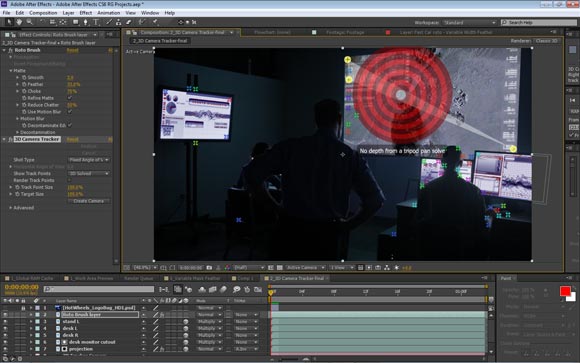
Feathered friend
As in Photoshop, Adobe After Effects CS6 lets you add a feathered soft edge to masked shapes, but now the new Mask Feather tool lets you define as many points as you want along a closed mask, and define the width of the feather at each of these points. Alt-clicking the feather point allows you to drag it to alter the tension of the feather outline, while right-clicking it lets you adjust Radius and Corner Angles for each feather point. Variable mask feather makes for better blending in the composite, allowing some sections such as hard metallic edges to remain sharp, while other sections that are out of focus or otherwise blurred can have a softer outline.

Ditch artefacts in After Effects CS6
'Rolling shutter' artefacts, where lines are unnaturally skewed, have become increasingly common in modern video editing. They're found in hand-held footage shot with CMOS sensors in video-capable DSLRs, such as the Canon MKII, but worse with mobile phone footage. To the rescue, somewhat, comes the new Rolling Shutter Repair effect. When applied to affected footage it will identify problem areas and let you adjust the Rolling shutter rate to remove the skew.
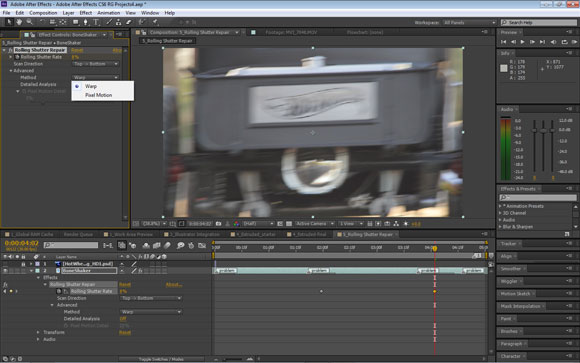
Import abilities in After Effects CS6
It's also now easier to work with files from Avid Media Composer and Symphony, or Apple's Final Cut Pro 7, editing applications. By using the Pro Import After Effects utility acquired from Automatic Duck, you are able to import all your media and clips from the external project at once. Effects are translated and recreated - your editing timeline becomes a composition in After Effects. Many effects and parameters from the host application are carried across, such as position, scale, rotation, keyframes, composite modes, titles and speed changes.
80 new effects to choose from
After Effects CS6 also ships with over 80 new and updated built-in effects, including the HD version of the Cycore FX suite. All of these now support 16-bit per channel colour, rather than the 8-bit versions of before, and thus ideal for HD video projects. 35 of the Cycore effects and many of the standard Adobe effects such as Drop Shadow and Timewarp also now support 32-bit floating point for maximum dynamic range - essential for compositing with footage such as ARRIRAW from ARRIFLEX D-21 or ALEXA digital cameras- now supported in After Effects CS6. Another benefit for the broadcast sector is wider support for Colour Lookup Tables (LUTs) for grading purposes.
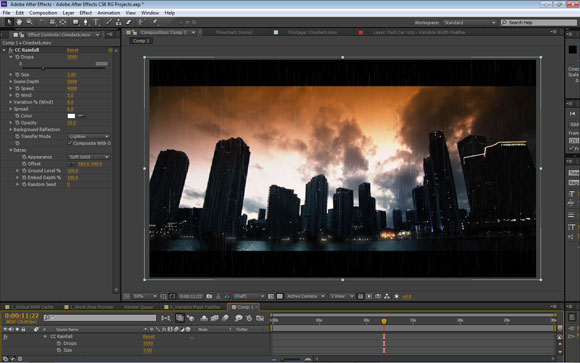
The need for speed
You'll need a fairly powerful machine to run After Effects CS6. 8GB of RAM is recommended (though minimum is 4GB) and a 64-bit processor (Intel CoreTM2 Duo or AMD Phenom II processor; or Multicore Intel processor for Macs) and operating system (Windows 7 with Service Pack 1 (64 bit) or Mac OS X v10.6.8 or v10.7). An Adobe-certified GPU card is also recommended for GPU-accelerated rendering.
PRICE
Full £834 (ex VAT), Upgrade £162 (ex VAT), £38.11/month as part of annual Creative Cloud subscription and £57.17/month as part of month-by-month Creative Cloud subscription. For details on where to buy, please visit the Adobe Store.
SYSTEM SPECS
For system specifications for Adobe After Effects CS6, and other apps in Adobe CS6, please visit our Adobe system specs page.
And if you're looking for some cool projects, please check out these After Effects tutorials.
QUICK LINKS TO ADOBE CS6 REVIEWS:
out of 10
The Global Performance Cache is amazing, as it basically means that you have much more power to experiment with effects without waiting around for the rendering of your PC to catch up. As such it's worth, to a deadline-conscious compositor at least, the cost of an upgrade - or Creative Cloud subscription- in itself. The 3D camera tracker and ray tracer renderer are also very welcome additions, probably the Wow features in this release, though it has to be said we have a soft spot for the Illustrator integration too. Variable mask feathering has been long requested by the AE faithful, so that patience has been finally rewarded. Having sung the praises of After Effects CS6, there were things we weren't so keen on. We don't like the fact that Photoshop Video Layers and Pixel Bender are not presently supported. And we'll probably have to invest in an NVIDIA Quadra card or similar after being tempted by the thought of GPU-accelerated ray-traced 3D rendering. This may be problematic for those on a MacBook Pro or Windows laptop. It's also worth noting that the ray tracer does not support layer styles and certain masks and effects, nor is underlying transparency preserved, or tasks like lighting blending modes and track mattes supported. However the ray tracer renderer will deliver a very decent level of photorealistic quality using only the power of the CPU, so don't let this put you off upgrading.

The Creative Bloq team is made up of a group of art and design enthusiasts, and has changed and evolved since Creative Bloq began back in 2012. The current website team consists of eight full-time members of staff: Editor Georgia Coggan, Deputy Editor Rosie Hilder, Ecommerce Editor Beren Neale, Senior News Editor Daniel Piper, Editor, Digital Art and 3D Ian Dean, Tech Reviews Editor Erlingur Einarsson, Ecommerce Writer Beth Nicholls and Staff Writer Natalie Fear, as well as a roster of freelancers from around the world. The ImagineFX magazine team also pitch in, ensuring that content from leading digital art publication ImagineFX is represented on Creative Bloq.
